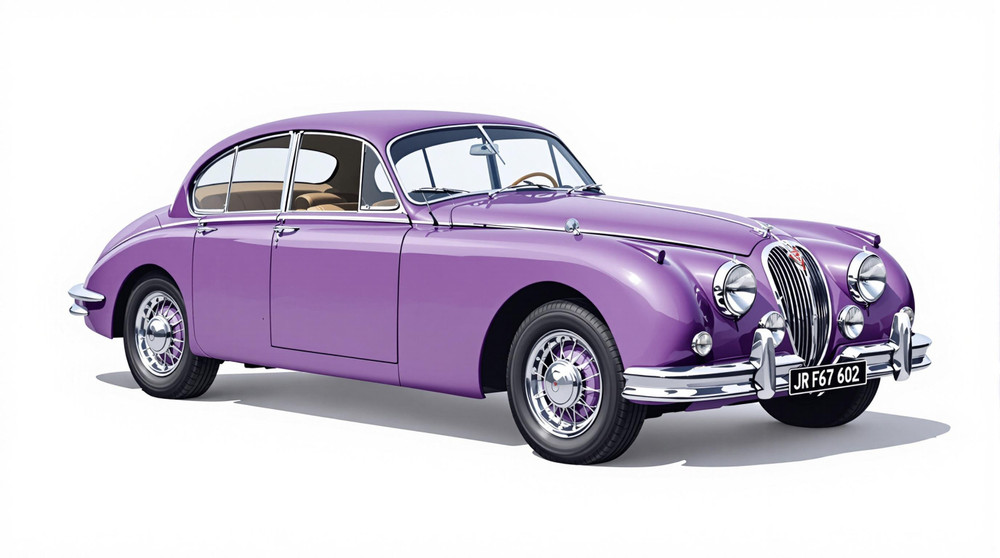Image of 1960 Jaguar 3.4, Note: These illustrations use artistic license and may differ from actual historical models.
Performance Metrics
Fundamental Metrics
Emotional Appeal
MMP Rating
| Engine Specifications | |
|---|---|
| Engine: | Inline 6 |
| Displacement: | 3.4L |
| Horsepower: | 210 hp |
| Torque: | 216 lb-ft |
| Compression Ratio: | 8.0:1 |
| Ignition System: | Lucas ignition system |
| Cooling System: | Liquid cooled |
| Performance Specifications | |
| 0-60 Time: | 9.1 seconds |
| 1/4 Mile Time: | Estimated 16.5 seconds |
| Top Speed: | 120 mph |
| Transmission and Drive | |
| Drive Type: | Rear wheel drive |
| Transmission Type: | 4-speed manual |
| Fuel and Efficiency | |
| Fuel System Type: | Twin SU carburetors |
| MPG: | Estimated 16-18 mpg |
| Dimensions and Brakes | |
| Brakes: | Disc brakes |
| Wheelbase: | 107.5 inches |
| Weight: | 3,200 lbs |
Note: Specifications for classic cars are given to the best of our ability, considering the limited and variant data available.
The Quintessential British Classic: The 1960 Jaguar 3.4
The 1960 Jaguar 3.4 is not merely a car; it's a rolling sculpture that encapsulates the elegance and engineering prowess of its era. Born from the storied marque known for producing some of the most iconic vehicles in history, this model carries the legacy of Jaguar's commitment to luxury and performance. With its sleek lines and refined presence, the Jaguar 3.4 emerged during a period when Britain was redefining automotive excellence, offering a blend of style and speed that was unrivaled at the time. A unique fact about this vehicle is its association with the British television series "Inspector Morse," which featured a Jaguar Mark 2, closely related to the 3.4, thereby cementing its place in popular culture.
Design and Innovation
The exterior of the 1960 Jaguar 3.4 is a testament to timeless design, with its long bonnet, distinctive grille, and graceful curves that exude a sense of motion even at a standstill. The interior is equally impressive, boasting sumptuous leather seats and polished wood veneers that speak volumes about the craftsmanship of the era. Technologically, it was ahead of its time with features like disc brakes and independent rear suspension. Color options ranged from stately British Racing Green to a bold Carmen Red, with opulent hues like Imperial Maroon often catching buyers' eyes. The most iconic body style remains the saloon, which perfectly balanced luxury and sportiness.
Historical Significance
The impact of the 1960 Jaguar 3.4 on automotive design cannot be overstated. It set new standards for what a luxury sports sedan could be, combining an athletic demeanor with an upscale interior that few contemporaries could match. Its influence can be seen in subsequent generations of cars that strived to emulate its blend of elegance and agility.
Performance and Handling
Underneath the hood lay a robust inline-six engine that propelled the Jaguar 3.4 from 0-60 mph in under 10 seconds—a remarkable feat for its time—with a top speed approaching 120 mph. The car's handling was equally impressive; it navigated bends with poise and absorbed road imperfections with aplomb, making it both an enthusiastic driver's choice and a comfortable tourer. The symphony from the exhaust and tactile feedback through the steering wheel provided an immersive driving experience.
Ownership Experience
The Jaguar 3.4 was versatile enough to serve as an elegant daily driver or as a weekend showpiece at classic car rallies. Maintenance requires a dedicated owner, as some parts may be scarce, but overall reliability is commendable for a car of its age. A well-maintained example can provide years of motoring pleasure.
Fun Facts
This classic has been owned by celebrities and has even graced royal garages. While not known for breaking speed records, it held its own in terms of sales success and endurance within its class during its heyday. Criticisms were few but often pointed towards fuel consumption—a small price to pay for such grandeur.
Collector's Information
Today, the value range for a well-preserved 1960 Jaguar 3.4 can vary significantly based on condition, history, and originality, with prices generally ranging from $30,000 to over $100,000 for pristine examples. Production numbers were limited compared to mass-market vehicles, adding to their rarity and appeal among collectors. As appreciation for classic cars grows, values are likely on an upward trend.
Conclusion
In summary, the 1960 Jaguar 3.4 stands as a paragon of British automotive heritage—a blend of luxury, performance, and timeless design that continues to captivate enthusiasts around the world. Its legacy endures not just in classic car circles but also as an enduring symbol of an era when cars were more than just transportation; they were statements of sophistication and speed.
1960 Jaguar 3.4 Catalog of Parts
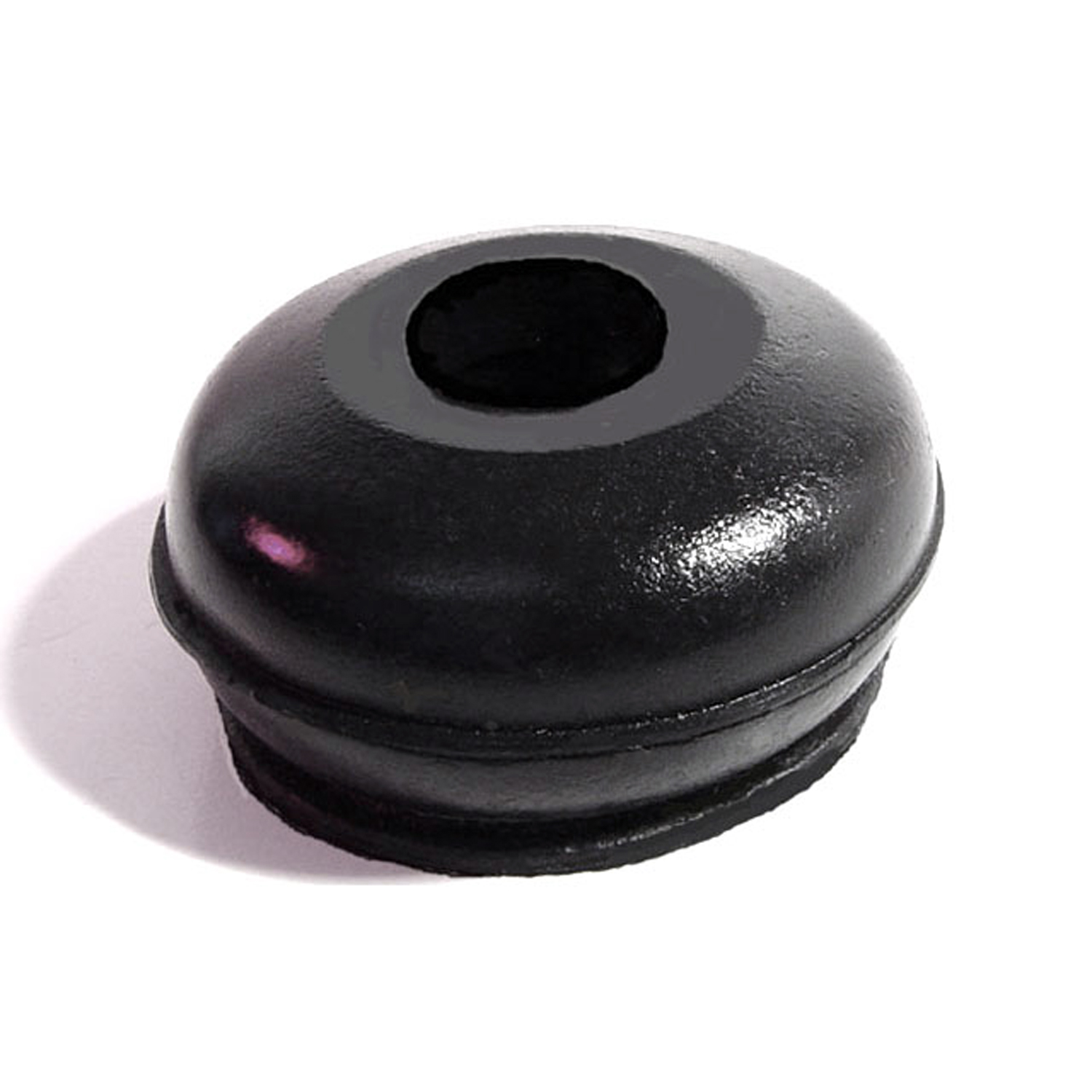 1960 Jaguar 3.4 Upper and Lower Ball Joint Boot. 5/8" upper I.D-BN 101-AUpper and Lower Ball Joint Boot. 5/8" upper I.D., 1-1/2" bottom I.D., 7/8" high. Each
1960 Jaguar 3.4 Upper and Lower Ball Joint Boot. 5/8" upper I.D-BN 101-AUpper and Lower Ball Joint Boot. 5/8" upper I.D., 1-1/2" bottom I.D., 7/8" high. Each 1960 Jaguar 3.4 Roll Bar Bushing. 1/2" high, with 1/2" hole. Each-BN 2Roll Bar Bushing. 1/2" high, with 1/2" hole. Each
1960 Jaguar 3.4 Roll Bar Bushing. 1/2" high, with 1/2" hole. Each-BN 2Roll Bar Bushing. 1/2" high, with 1/2" hole. Each 1960 Jaguar 3.4 Auto Brake Pedal Pad. 3-1/4" wide X 5-1/2" long. Each-CB 75-BAuto Brake Pedal Pad. 3-1/4" wide X 5-1/2" long. Each
1960 Jaguar 3.4 Auto Brake Pedal Pad. 3-1/4" wide X 5-1/2" long. Each-CB 75-BAuto Brake Pedal Pad. 3-1/4" wide X 5-1/2" long. Each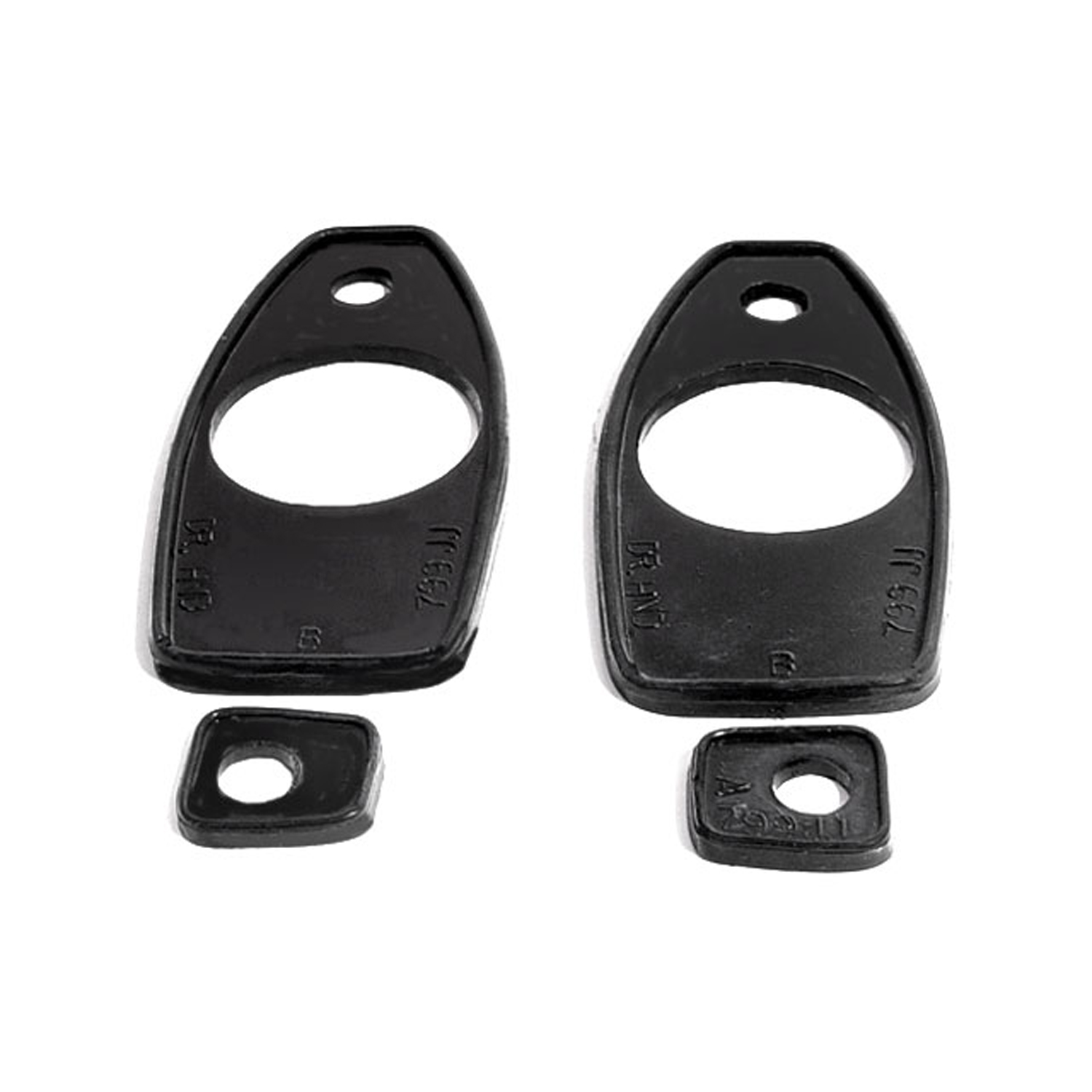 1960 Jaguar 3.4 Door Handle Pads. 1-1/8" wide X 2-5/8" long. 4-Piece Set-MP 799-JJDoor Handle Pads. 1-1/8" wide X 2-5/8" long. 4-Piece Set
1960 Jaguar 3.4 Door Handle Pads. 1-1/8" wide X 2-5/8" long. 4-Piece Set-MP 799-JJDoor Handle Pads. 1-1/8" wide X 2-5/8" long. 4-Piece Set 1960 Jaguar 3.4 Tail-light Pads. 3-7/8" wide X 11-3/4" long. Pair-MP 799-RRTail-light Pads. 3-7/8" wide X 11-3/4" long. Pair
1960 Jaguar 3.4 Tail-light Pads. 3-7/8" wide X 11-3/4" long. Pair-MP 799-RRTail-light Pads. 3-7/8" wide X 11-3/4" long. Pair 1960 Jaguar 3.4 Spark plug wire boot. Exclusive Metro part-RP 1-KSpark plug wire boot. Exclusive Metro part. Fits on the distributor cap end. Note: looks similar to coil boot, but is physically smaller. Replaces OEM# CO 2609. Each.
1960 Jaguar 3.4 Spark plug wire boot. Exclusive Metro part-RP 1-KSpark plug wire boot. Exclusive Metro part. Fits on the distributor cap end. Note: looks similar to coil boot, but is physically smaller. Replaces OEM# CO 2609. Each.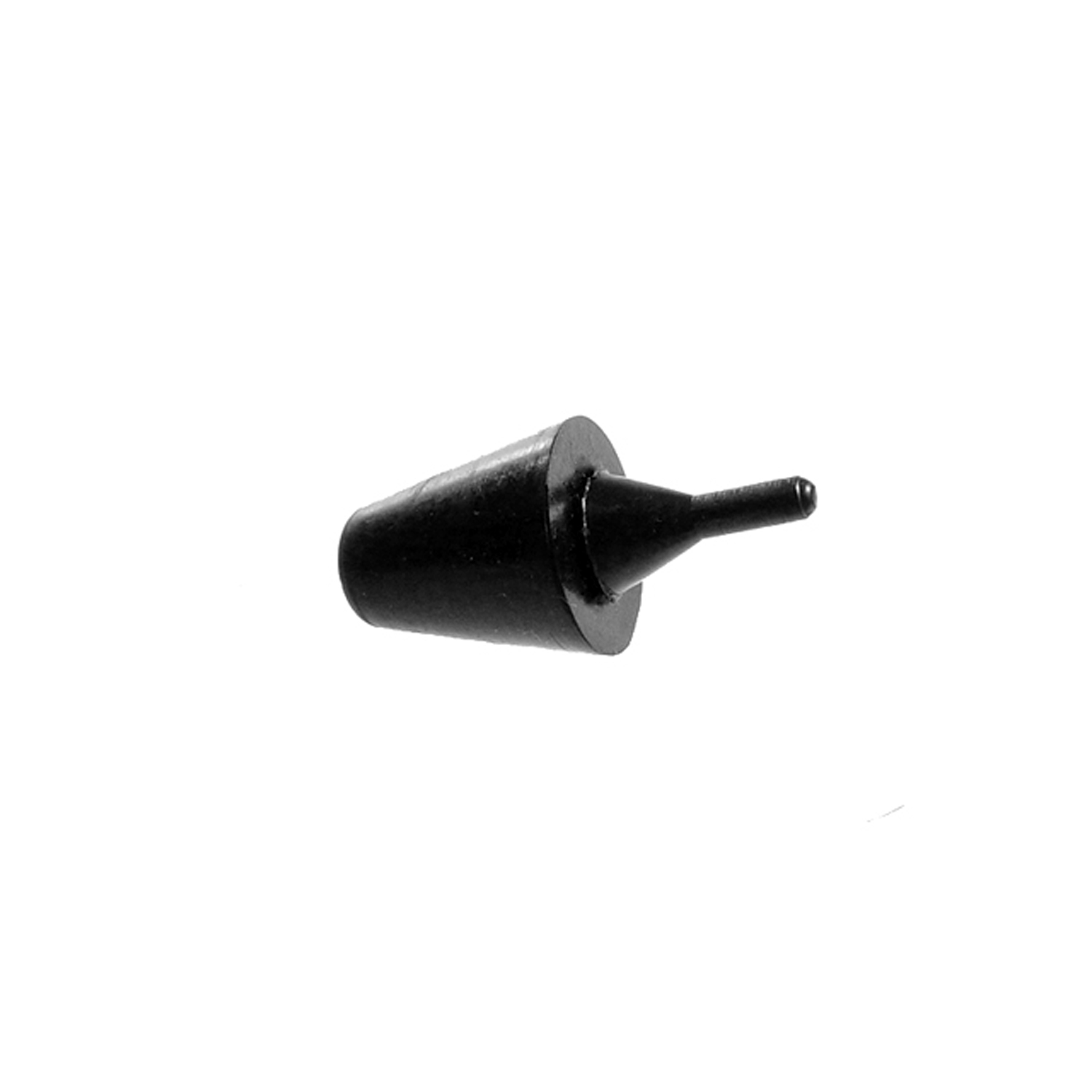 1960 Jaguar 3.4 Hood Bumper. For rear of hood buffer. Each-SB 111Hood Bumper. For rear of hood buffer. Each
1960 Jaguar 3.4 Hood Bumper. For rear of hood buffer. Each-SB 111Hood Bumper. For rear of hood buffer. Each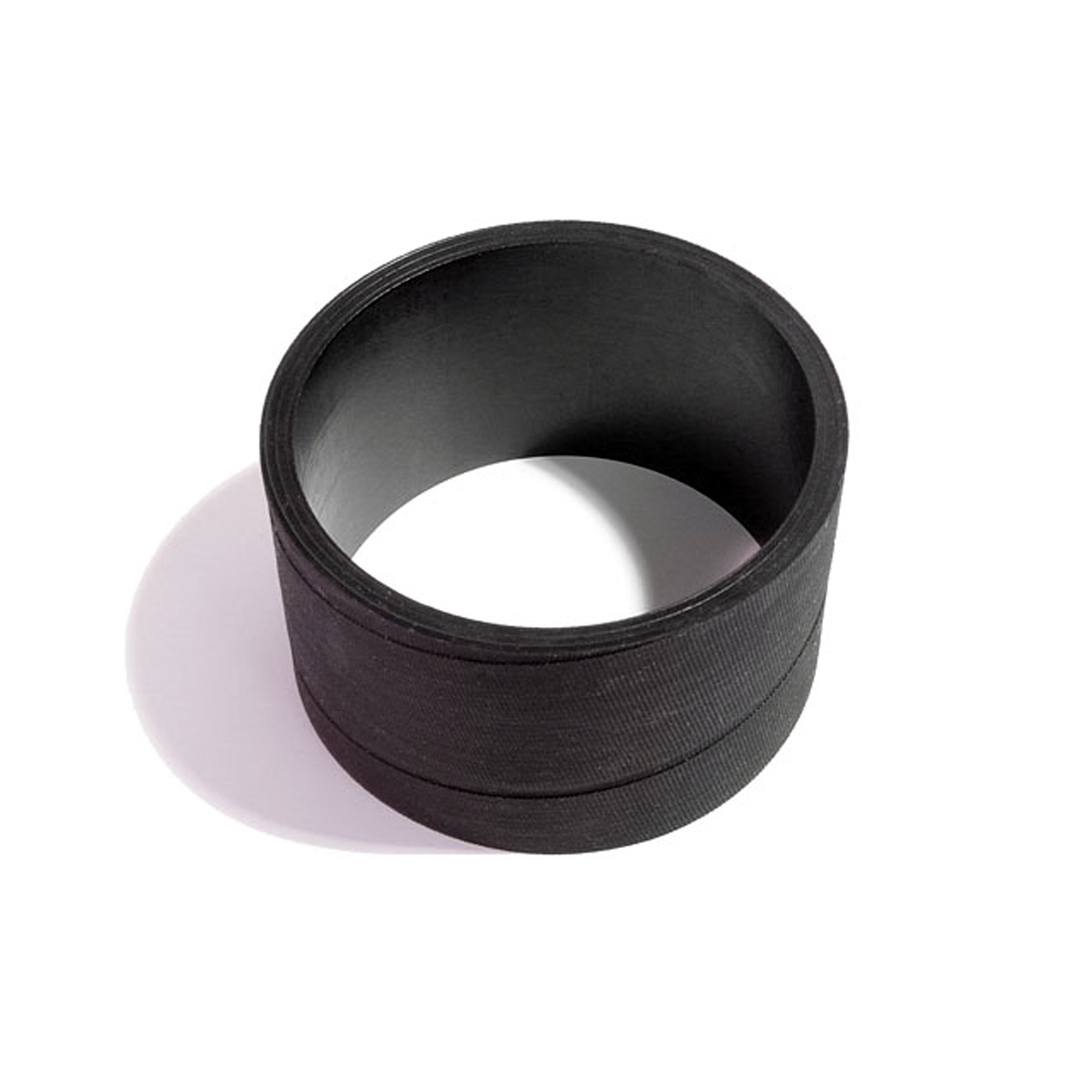 1960 Jaguar 3.4 Air Cleaner to Intake Manifold Sleeve. Hard rubber-VH 102-EAir Cleaner to Intake Manifold Sleeve. Hard rubber. 4-5/8" ID, 4-7/8" OD, 2" High. Each.
1960 Jaguar 3.4 Air Cleaner to Intake Manifold Sleeve. Hard rubber-VH 102-EAir Cleaner to Intake Manifold Sleeve. Hard rubber. 4-5/8" ID, 4-7/8" OD, 2" High. Each.Why Choose Metro?
For over 100 years, Metro Moulded Parts has been the pinnacle of quality in classic car restoration parts. Our commitment to precision and authenticity in every component ensures a perfect fit and an OEM-level appearance.
- Expert Craftsmanship & Quality: Each part is a testament to our dedication to reliability and perfection, crafted from original designs and thoroughly tested.
- Advanced Technology: We use cutting-edge techniques to create flawless, long-lasting parts that surpass others in performance.
- SuperSoft Sponge – The Ultimate Door Seal: Not only are our door seals 30% softer than competitors', but they're also guaranteed to never leak. They effectively reduce wind and road noise, enhancing your classic car's comfort and driving experience.
- Proudly American: Our parts are a product of American craftsmanship, made in the USA with a spirit of excellence and heritage.
- Unrivaled Warranty: We back our products with a 30-year industry-leading warranty, a testament to our confidence in their quality.
Join us in preserving the legacy of classic cars with parts that are crafted for perfection, not just made.

